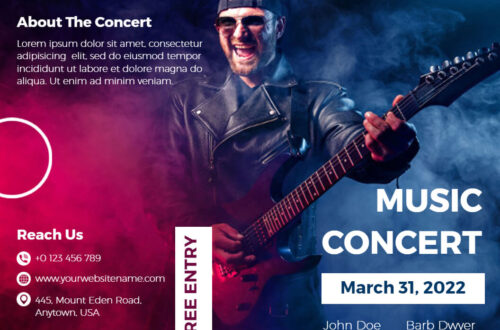
Paddle Power-Kayaking and Canoeing for Beginners
Are you looking for an exciting new way to get out and explore nature? If so, paddle power is the perfect activity for you. Paddle power combines kayaking and canoeing, two of the most popular water sports. In this blog post, we will cover the basics of paddle power, from the different types of paddle power to the gear and techniques you will need to get started. Whether you are a beginner or an experienced paddler, this post will give you the information you need to hit the water with confidence. So let us dive in and get paddling!
Read More: Liam Farnes travel
Types of Paddle Power
Canoeing and kayaking are two of the most popular water sports around. They’re easy to learn and provide plenty of enjoyment for both beginners and seasoned paddlers alike. In this section, we’ll be discussing the different types of paddle power and how they differ. We’ll also provide an overview of the basics of canoe riding, as well as tips on choosing the right equipment and techniques for getting started. Finally, we’ll cover some common areas for water sports activities as well as events and clubs available to get involved in paddle power sports. Happy paddling!
Gear Up for Kayaking and Canoeing
Summertime is the perfect time to get out on the water and explore some new kayaking and canoeing destinations. Whether you’re a beginner or an experienced paddler, there are a variety of different types of kayaking and canoeing that you can try. And while there is certainly plenty of gear that you’ll need, the basics are easy to learn. Below, we’ll outline some of the most important basics for a successful paddle trip.
When it comes to kayaking and canoeing, there are three main types: touring, touring-single track, and whitewater. Each has its own set of advantages and disadvantages, so it’s important to choose the right type of kayaking or canoeing for your destination. For example, touring kayaks are well-suited for leisurely paddling around scenic lakes or rivers while touring-single track is perfect for exploring challenging rapids or Class IV rivers. Whitewater paddlers will want to focus on river running rather than flat water paddling – this is where your experience will come in handy!
Also Read More: The Value of Utilizing a Tour Guide
Kayaking or Canoeing
In addition to choosing the right type of kayaking or canoeing for your destination, you will also need to consider what equipment you will need. Basic necessities include a paddle (preferably one with a blade guard), a life jacket (inflatable if possible), a floating device (such as a PFD or BC), sunglasses/hat/sunglasses combo, snacks and drinks (water/sports drink recommended), a first aid kit including adhesive bandages and burn cream, a map case/ compass/ GPS unit (optional but helpful), and insect repellent if necessary. Note that while all types of kayaks can be used in either fresh or salt water
environments; ocean kayaks tend to be better suited for ocean kayaking than inland styles like canoe paddles because they have more buoyancy which gives them stability when negotiating waves.
Once you’ve gathered all your equipment and essentials, it’s time to learn how to paddle! There are three basic techniques: forward motion with the oar in front of you on the water like swimming; reverse motion with the oar behind you; rotating motion using both oars at once like rowing on an indoor rower machine. Experiment with each until you feel comfortable moving around in your boat – once mastered these techniques will make navigating much easier
Finally let’s discuss safety when out on the water – always obey prevailing wind conditions; never travel alone; know how long it will take you return from your destination based on current.
What Equipment You Need to Get Started Kayaking and Canoeing
Kayaking and canoeing are great outdoor activities that can be enjoyed by everyone. However, before you can enjoy these activities, you’ll need to equip yourself with the right gear. Below, we’ll outline the different types of kayaks and canoes available as well as the necessary safety equipment. We’ll also discuss cost considerations, where to purchase your gear, and what clothing and gear is recommended for these activities.
There are a variety of different types of kayaks and canoes available on the market today. Some are designed for touring while others are designed for more recreational use. Regardless of which type you choose, make sure that you equip yourself with the appropriate safety equipment. This includes a life jacket and PFD (personal flotation device), both of which should be worn at all times when paddling.
In terms of cost, kayaks and canoes vary in price but tend to be affordable overall. However, there are some specific pieces of equipment that may require more expensive versions than others (such as paddle blades or kayak seats). Before making a purchase, take into account your intended use for the boat as well as your budget so that you’re getting the best bang for your buck.
Once you’ve got your equipment assembled, it’s time to hit the water! Both kayaking and canoeing offer many benefits that make them great outdoor activities – from fitness training to enjoying scenic views without having to drive anywhere. When selecting clothing and gear for either activity, keep in mind that both kayaking and canoeing involve some level of exertion (even if just cruising around!). Consult with other paddlers before hitting the water wearing anything too tight or revealing – you wouldn’t wear such clothing while hiking or running outdoors would you?
We hope this guide has helped guide you toward choosing the right type of kayak or canoe for your next outdoor adventure!
Safety & Techniques for Paddle Power
Paddle power is a popular way to enjoy the outdoors, and it has many benefits over traditional fishing methods. Paddle power allows you to be more selective with your catches, and it’s a great way to
explore new areas without having to worry about getting wet. In this section, we will outline the basics of preparing for a paddle session, as well as discuss some of the best equipment and clothes selections for paddle power. We will also provide tips on basic techniques for steering, controlling speed, and turning maneuvers. We will also discuss safety precautions and offer advice on how to improve your skills over time. Finally, we’ll explore some of the different ways that you can enjoy paddle power – from competing in tournaments to going solo excursions. So get ready to experience the thrill of paddling like never before!
To Summarize
Paddle power is a great way to get out and explore nature while getting some exercise. Whether you’re a beginner or an experienced paddler, this blog post covers the basics of paddle power, from types of paddle power to the gear and techniques you need for a successful trip. Paddle power can be enjoyed alone or with others in tournaments and excursions, so go out there and enjoy your time on the water! Don’t forget to always practice safe paddling habits – wear your life jacket, bring the necessary equipment and clothing, know your destination well before heading out, obey the prevailing wind conditions, and never travel alone. Now that you have all the information you need – it’s time to hit the water and start paddling.



